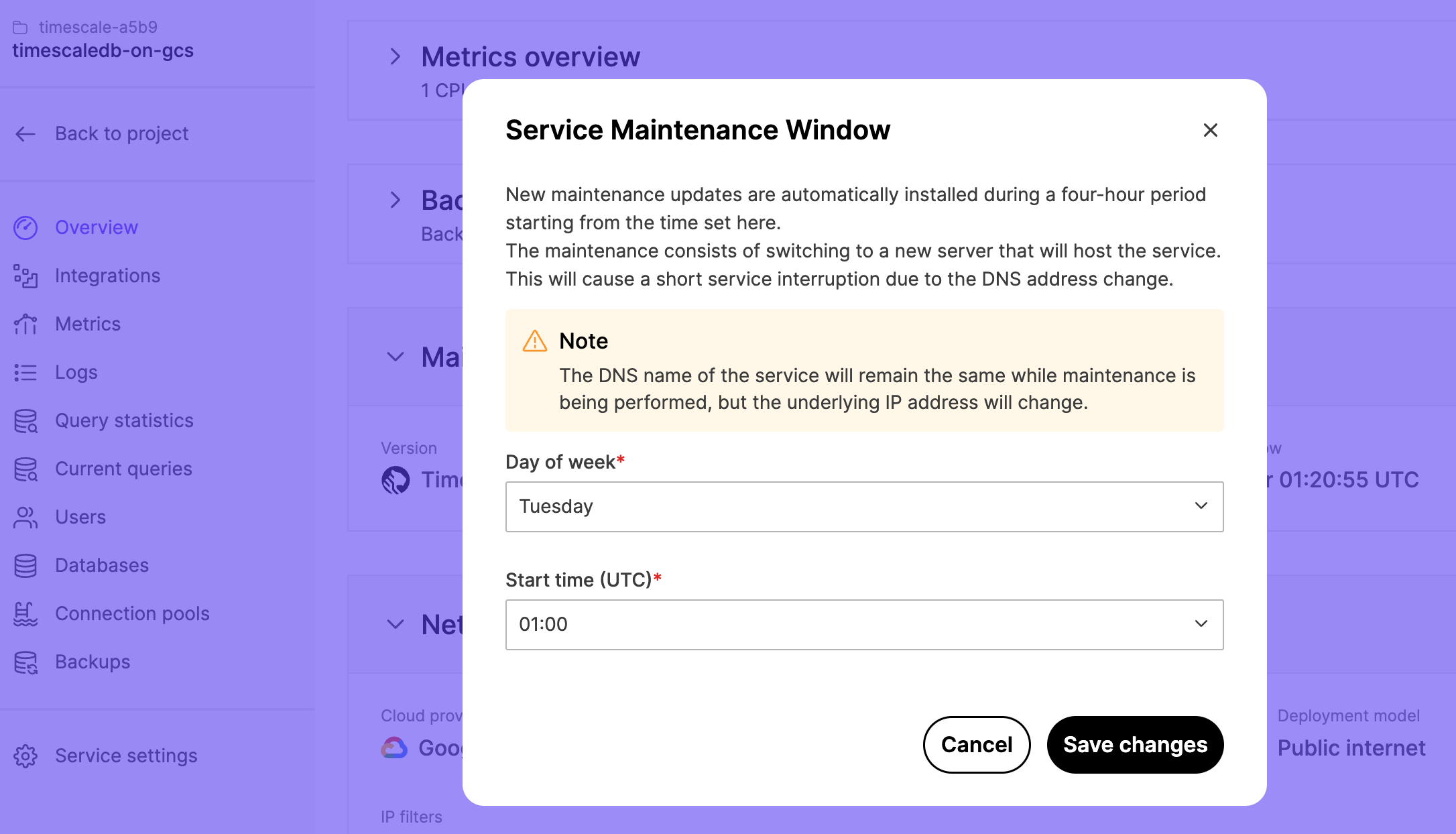Timescale Cloud: Performance, Scale, Enterprise
Self-hosted products
MST
On Managed Service for TimescaleDB, software updates are handled automatically, and you do not need to perform any actions to keep up to date.
Non-critical software updates are applied during a maintenance window that you can define to suit your workload. If a security vulnerability is found that affects you, maintenance might be performed outside of your scheduled maintenance window.
After maintenance updates have been applied, if a new version of the Timescale binary has been installed, you need to update the extension to use the new version. To do this, use this command:
ALTER EXTENSION timescaledb UPDATE;
Important
After a maintenance update, the DNS name remains the same, but the IP address it points to changes.
Non-critical upgrades are made available before the upgrade is performed
automatically. During this time you can click Apply upgrades to start the
upgrade at any time. However, after the time expires, usually around a week,
the upgrade is triggered automatically in the next available maintenance window
for your service. You can configure the maintenance window so that these
upgrades are started only at a particular time, on a set day of the week. If
there are no pending upgrades available during a regular maintenance window, no
changes are performed.
When you are considering your maintenance window schedule, you might prefer to choose a day and time that usually has very low activity, such as during the early hours of the morning, or over the weekend. This can help minimize the impact of a short service interruption. Alternatively, you might prefer to have your maintenance window occur during office hours, so that you can monitor your system during the upgrade.
- In MST Portal
, click the service that you want to manage the maintenance window for.
- Click the ellipses (...) to the right of
Maintenance, then clickChange maintenence window. - In the
Service Maintenance Windowdialog, select the day of the week and the time (in Universal Coordinated Time) you want the maintenance window to start. Maintenance windows can run for up to four hours.
- Click
Save Changes.
Critical upgrades and security fixes are installed outside normal maintenance windows when necessary, and sometimes require a short outage.
Upgrades are performed as rolling upgrades where completely new server instances are built alongside the old ones. When the new instances are up and running they are synchronized with the old servers, and a controlled automatic failover is performed to switch the service to the new upgraded servers. The old servers are retired automatically after the new servers have taken over. The controlled failover is a very quick and safe operation and it takes less than a minute to get clients connected again. In most cases, there is five to ten second outage during this process.
Keywords
Found an issue on this page?Report an issue or Edit this page
in GitHub.